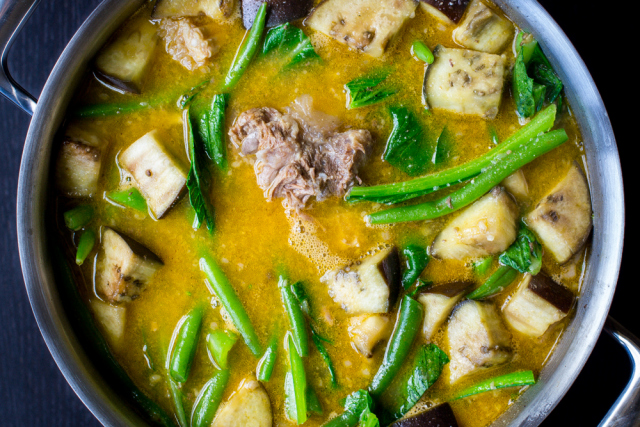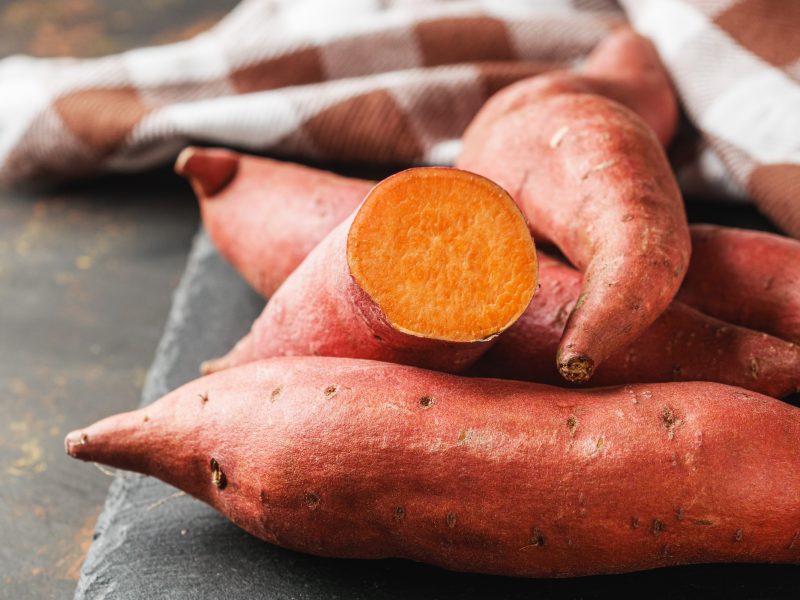

Let me tell you a quick story. I first visited Singapore about 10 years ago, flying solo to the city-state for a work trip. I loved this tiny country from the very start, most especially their melting pot of cultures and languages (the country has four official languages: English, Malay, Mandarin, and Tamil). I also happened to be visiting during Chinese New Year, and the whole downtown area was filled with celebrations and fireworks – quite a welcoming sight for this young and starry-eyed traveler.
My first morning in the city I awoke starving (and a little hungover), and decided to scout out some local restaurants for a late breakfast. I quickly learned an important lesson: during the daytime, Singapore basically shuts down for Chinese New Year. After miles of walking, I finally found a shopping center that was open, and headed for the first restaurant I could find, a small, cramped Filipino restaurant.
The menu was written in Tagalog, and I was too hungry and grumpy to ask for an English menu, so I just worked my way through the list of dishes on my own. I settled on Kare Kare, mostly because it sounded like “curry”, and based on its description I figured the word karne meant meat (I was right). Meat curry sounded like a perfect fit for my empty stomach. I couldn’t translate the rest of the dish’s description but I figured I was good to go.
The dish that arrived held little similarity to curry, and was more like a thick, mild stew that tasted like peanuts. I also found little in the way of meat in the dish, mostly attached to weird-looking bones (oxtails) or some strange looking chewy substance (tripe). But you know what? It was delicious, and I ate every bit of it, even if I had no idea what it was.
I’m pretty sure that this meal is what started drawing me towards adventurous eating, and so I wanted to share the recipe for the dish with you this week. As you might have figured out, Kare Kare is a Philippine oxtail stew, often served with tripe and pig or cow feet. There’s a bit of variation to this dish, but it is typically includes eggplant, green beans, and Chinese cabbage. The name Kare Kare may have been introduced by Indian immigrants who settled to the east of Manila, while others believe that the dish came from the Pampanga region to the northwest of the Philippine capitol city.

Toasted white rice is ground and added to the stew to help thicken it. If you avoid rice, simply omit this step from the recipe.

Annatto seeds soaking. They’re used to color the stew, and can be omitted if they are difficult to find in your area (check your local Asian or Latin market).
Kare Kare (Philippine Oxtail and Tripe Stew)
3 lbs oxtails
1 pig foot or pork hock (or cow’s foot)
1 tbsp coconut oil
1 small onion, chopped
4 cloves garlic, minced
1/2 lb tripe, cut into bite-sized chunks
1/2 cup white rice, toasted and ground (see #4 below)
1 tbsp cashews, ground (see #4 below)
1 tbsp almonds, ground (see #4 below) (or 1 tbsp almond flour)
1 tbsp annatto seeds (optional, see below)
2 tbsp almond butter or sunflower seed butter
1 tbsp fish sauce
salt and pepper to taste
Tabasco or other hot sauce to taste
1 eggplant, cut into bite-sized chunks
1/2 lb fresh green beans
1 lb Chinese cabbage (bok choy, choy sum, or kai lan)
1. In a large stockpot, cover the oxtails and pig’s foot with enough water so that they are covered by 1″. Bring to a boil on high heat and boil for 5 minutes, then drain and rinse, then set aside. This step removes possible pathogens from the bones.
2. Warm the empty pot over medium heat for a minute, then add the coconut oil and onion. Sauté until softened, about 5 minutes, then add the garlic and sauté for another 30 seconds. Return the oxtails and pig’s foot to the pot, along with the tripe; fill with enough water to cover everything by 1″.
3. Over med/high heat, bring to a simmer then reduce heat to low; simmer until the meat pulls easily from the oxtail, about 3 hours, replenishing water as it evaporates below the line of the meat/bones. Skim any fat or foam that accumulates at the surface of the water. Alternatively, pressure cook everything for 45 minutes.
4. As the soup cooks, toast the white rice over low heat until golden brown, then cool and grind into a powder using a mortal and pestle or a blender (I used my Magic Bullet). Also, grind the cashews and almonds into a flour/paste (using the same tools as the rice). Lastly, soak the annatto seeds in water for 30 minutes, then crush them using a spoon (while they’re still in the water). Annatto seeds don’t impart much flavor, but are used to give the stew a pleasant color; if they’re not easy to find in your local area, I wouldn’t lose any sleep over them.
4. Once the oxtails are done cooking, remove the pig foot/hock from the soup, cool, then pick out the meat; return the meat to the pot and discard the rest of the foot. Add the ground rice, ground nuts, the water you soaked the annatto seeds in (strain the seeds so they don’t get into the soup), the almond butter (or sunflower seed butter), and fish sauce. Return to a simmer, stirring often so that the rice doesn’t stick to the bottom, then taste the soup. Add salt and pepper to taste. Some people like to add a few squirts of Tabasco, go for it if you’re so inclined.
5. Once the soup tastes good, let’s finish it by adding the vegetables. Add the eggplant chunks and simmer for 3 minutes, add the green beans and simmer for an additional 2 minutes, then add the Chinese cabbage and simmer until bright green, about 1 minute. Be sure to gently stir the soup often. Remove from heat and serve.
** Creating a peanut taste without peanuts is difficult, but I’ve found that a combination of nuts works best. In this case, cashews and almonds work well. Walnuts and macadamia nuts can also be used, depending on what you have on hand.

![]()
SOURCE: The Domestic Man – Read entire story here.


